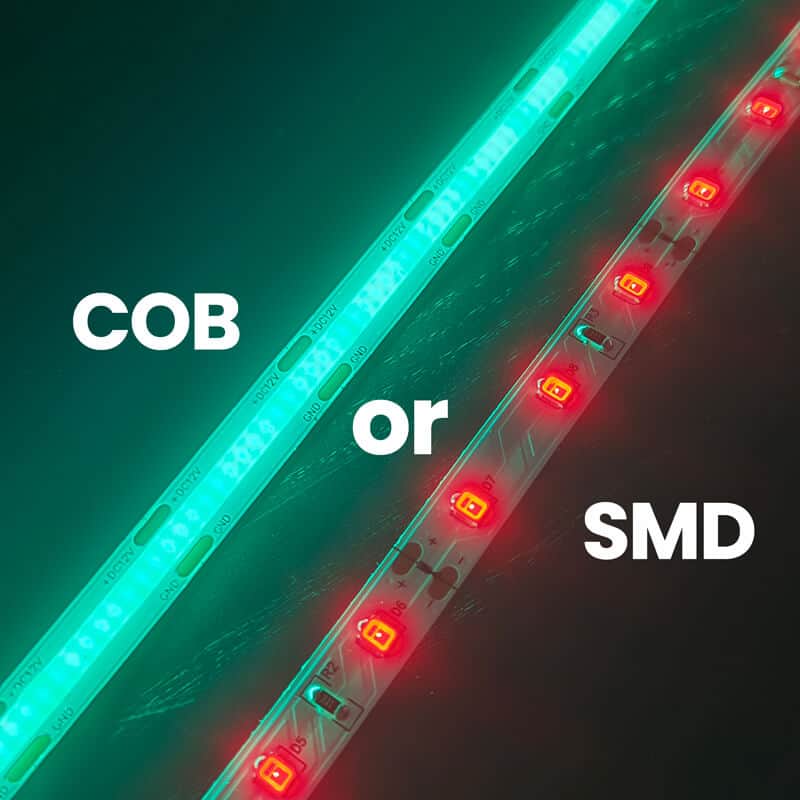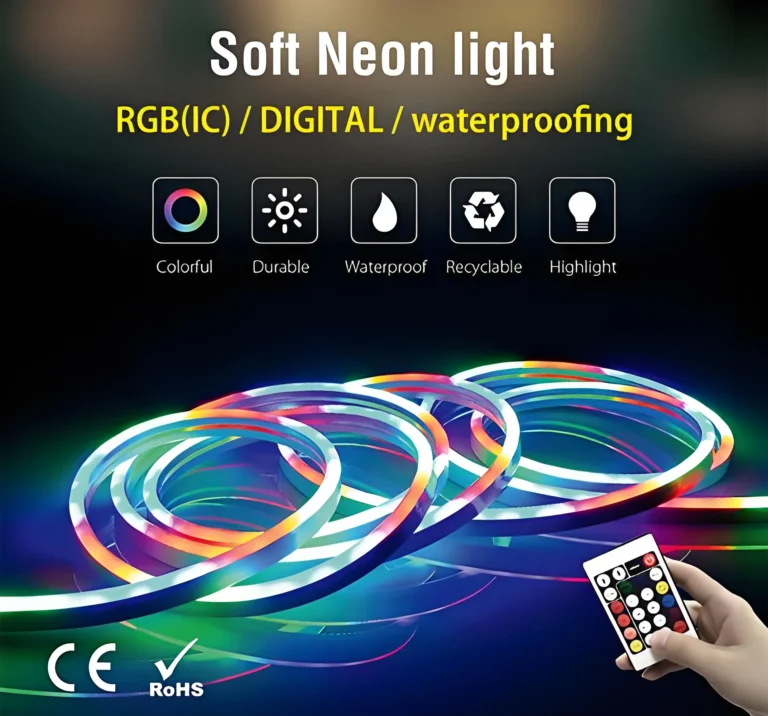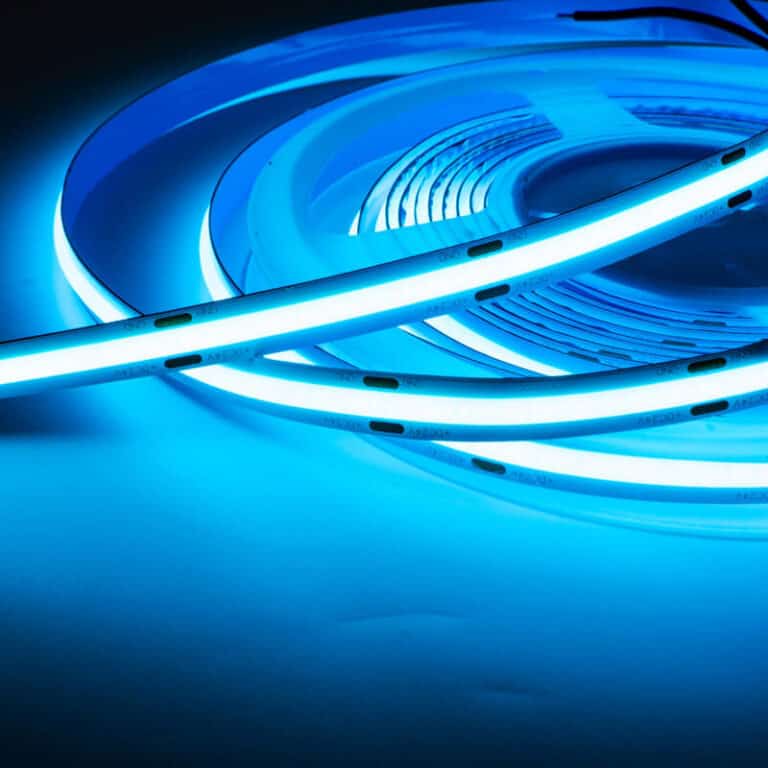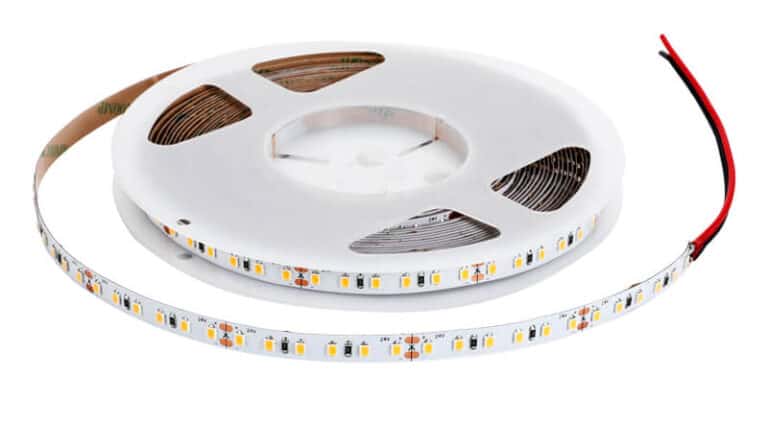
From task lighting to accent lighting, LED strip lighting has gained popularity for a range of uses. But selecting the proper kind of LED strip can be challenging, particularly when SMD and COB LED strips are available. We will look at the distinctions between SMD and COB LED strips in this article and determine which is better for your lighting requirements.
What is SMD LED strip?
Small light-emitting diodes (LEDs) are mounted on a thin, flexible printed circuit board (PCB) using surface-mounted device (SMD) LED technology. Because of their small size and compact design, these LEDs provide greater light source density and improved color blending. Due to their adaptability and versatility, SMD LED strips have emerged as the most popular kind of LED strip lighting on the market.
What is COB LED strip?
When using LEDs, Chip-On-Board (COB) technology, a single LED chip is directly attached to a printed circuit board (PCB). To distribute the light over a larger region, a phosphor coating is subsequently applied to the chip. Compared to SMD LED strips, COB LED strips provide a more consistent light output and greater heat dissipation.
Which LED strip-SMD or COB-is superior?
When it comes to SMD or COB LED strips, there is no obvious winner because each has benefits and drawbacks. Your particular lighting requirements will determine which is best.
Rendering of Colors and Brightness
Due to the high LED density on the PCB, COB LED strips offer excellent brightness and color rendering. Although COB LED strips have a consistent light output, they could not be as bright as SMD LED strips. SMD LED strips are the preferable choice if you want vivid, dazzling colors.
Heat Transfer
Due to the single LED chip’s direct PCB mounting, COB LED strips provide improved heat dissipation. The lifespan of the LED strip is aided by the more effective heat dissipation provided by the LED chip. Due to the near proximity of the LEDs in SMD LED strips, more heat may be produced, necessitating additional cooling methods.
Flexibility
SMD LED strips may be tailored to fit any surface because to their tremendous flexibility. Compared to SMD LED strips, COB LED strips are less flexible and may not bend as far.
Cost
In general, SMD LED strips cost less than COB LED strips. The price, however, may change in accordance with other features, color temperature, and brightness. SMD LED strips are typically a more economical choice.
Conclusion
The decision between SMD and COB LED strips will rely on the particular lighting requirements you have. Both have advantages and downsides. The SMD LED strip would be a great choice if you want vivid, bright colors. The COB LED strip is the superior option if you want improved heat dissipation and consistent light production. The decision between the two will ultimately be based on your budget and individual lighting requirements.






